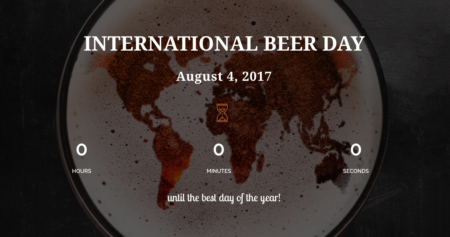Nibbles: Seed saving, Craft saving, Talking sweet potatoes, Breeding eggplants, Cat domestication, Cary on Svalbard, US apple book, US strawberries, Forages newsletter, Banana double
- 94% is the new 75%. Here’s some of the survivors.
- But how many crafts have we lost?
- Win a prize for communicating about sweet potatoes.
- Pre-breeding eggplants using their wild relatives.
- Two waves of cat domestication.
- Svalbard double.
- 350 buck’s worth of apple history.
- 10 cent’s worth of strawberry history.
- Latest newsletter from those nice forages genetic resources conservation folks.
- Bananas good and bad news.
Wheat is somewhat ignored, in some places
That’s according to Bill Gates, on his visit to The Bread Lab. May come as a surprise to CIMMYT and ICARDA, and to their partners at TraitGenetics. Or to the bunch of Italian farmers Jeremy interviewed for the latest Eat This Podcast. Or to everyone at the Land Institute and elsewhere working on perennial wheat. Maybe Mr Gates meant at his Foundation.
Brainfood: Kolli Hills diversity, Fergana diversity, Chinese rice terraces, ICRISAT prebreeding, Spanish CWR collecting, Edible flowers, Diversification, Prices vs volatility
- An ethnographic exploration of perceptions of changes in dietary variety in the Kolli Hills, India. Cassava cash cropping has had unforeseen effects on dietary diversity.
- Mapping and assessing crop diversity in the irrigated Fergana Valley, Uzbekistan. More crops on the edges.
- An Analysis on Crops Choice and Its Driving Factors in Agricultural Heritage Systems—A Case of Honghe Hani Rice Terraces System. Established for “red rice”, but that’s not enough.
- Prebreeding Using Wild Species for Genetic Enhancement of Grain Legumes at ICRISAT. It’s not easy, but it’s been worth it.
- A Multispecies Collecting Strategy for Crop Wild Relatives Based on Complementary Areas with a High Density of Ecogeographical Gaps. Collecting in Spain in “…top 10 selected complementary areas would allow the capture of 59 of the 88 targeted taxa and 31% of the 683 different taxa-ELC category combinations identified in the ecogeographical gaps.”
- Antioxidant power, anthocyanin content and organoleptic performance of edible flowers. Tycoon Blue will be quite the marketing challenge.
- Diversifying Food Systems in the Pursuit of Sustainable Food Production and Healthy Diets. And nary an edible flower mentioned.
- Cereal price shocks and volatility in sub-Saharan Africa: what really matters for farmers’ welfare? Prices.
Brainfood: African tea, Iranian olives, Persistent identifiers, Fast breeding, Lablab domestication, Pea origin, Celebs & conservation, Ancient dope, Sugarcane evolution, Chicken selection
- Multiple origins and a narrow genepool characterise the African tea germplasm: concordant patterns revealed by nuclear and plastid DNA markers. It’s a “potpourri,” but kinda missing Chinese Assam stuff.
- The eastern part of the Fertile Crescent concealed an unexpected route of olive (Olea europaea L.) differentiation. It was in Iran before domestication.
- Identifiers for the 21st century: How to design, provision, and reuse persistent identifiers to maximize utility and impact of life science data. Why DOIs succeeded, and why something like them needs to be applied to biological specimens, including genebank accessions, to combat “desultory citation practices”. But we knew that.
- Speed breeding: a powerful tool to accelerate crop research and breeding. Can double the number of generations per unit time with fully-enclosed controlled-environment growth chambers.
- Evidence for two domestication events of hyacinth bean (Lablab purpureus (L.) Sweet): a comparative analysis of population genetic data. With the 2-seeded group domesticated in Ethiopia, the 4-seeded somewhere else in Africa.
- Refinement of the collection of wild peas (Pisum L.) and search for the area of pea domestication with a deletion in the plastidic psbA-trnH spacer. Maybe not Turkey.
- The effectiveness of celebrities in conservation marketing. Use carefully, and evaluate.
- Cannabis in Eurasia: origin of human use and Bronze Age trans-continental connections. Proto-Indo-Europeans were real stoners.
- Analysis of Three Sugarcane Homo/Homeologous Regions Suggests Independent Polyploidization Events of Saccharum officinarum and Saccharum spontaneum. It’s really complicated, not least because of plant breeders.
- Genomic Comparison of Indigenous African and Northern European Chickens Reveals Putative Mechanisms of Stress Tolerance Related to Environmental Selection Pressure. African chickens able to withstand high temperatures due to a region on chromosome 27 and European chickens low temperatures due to region on chromosome 2.
